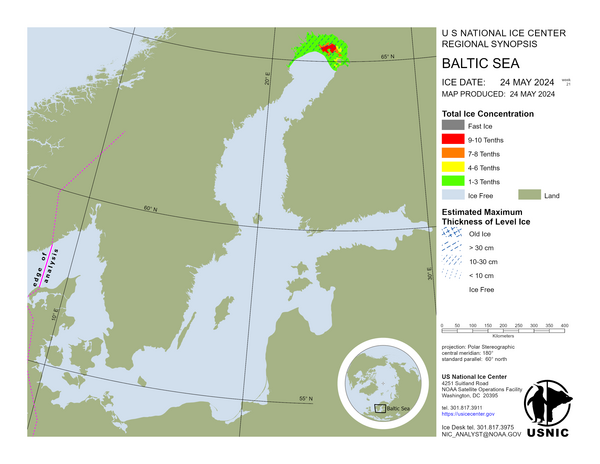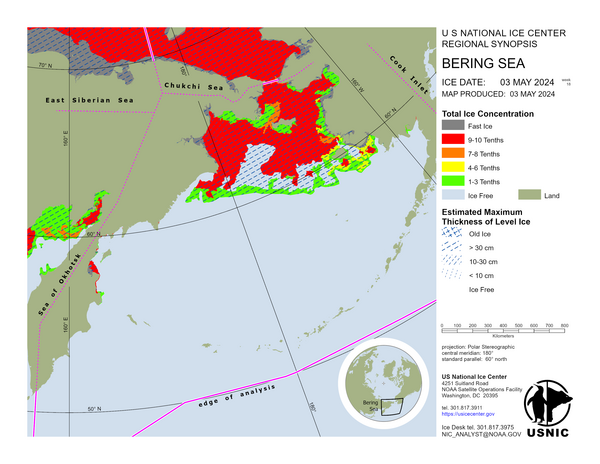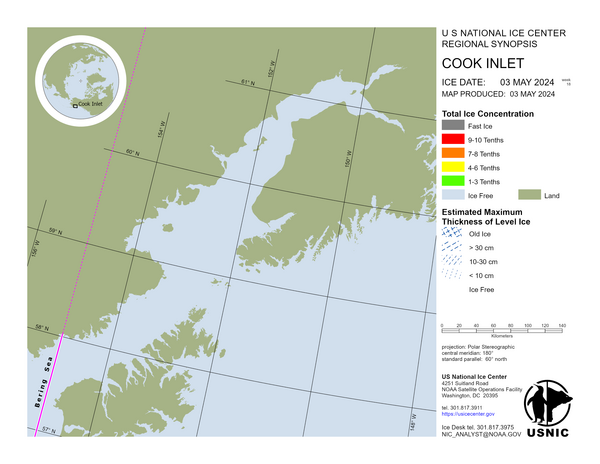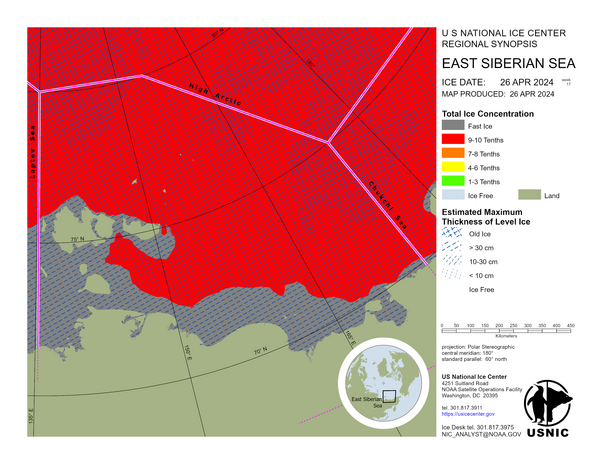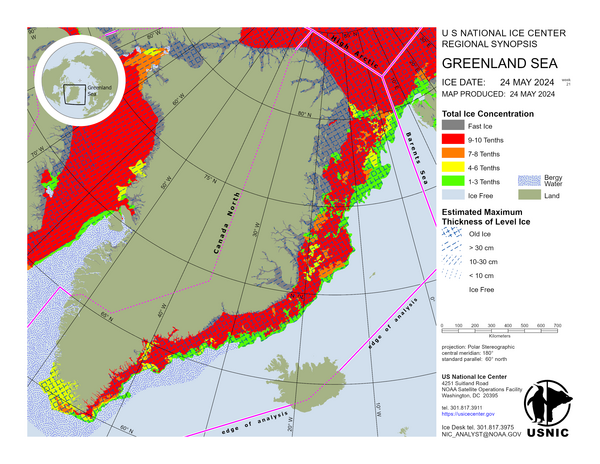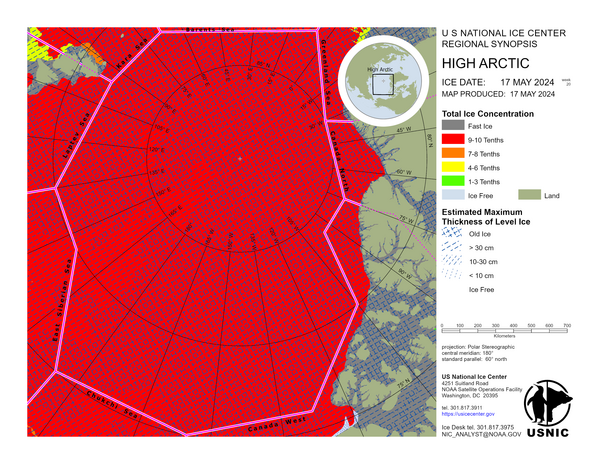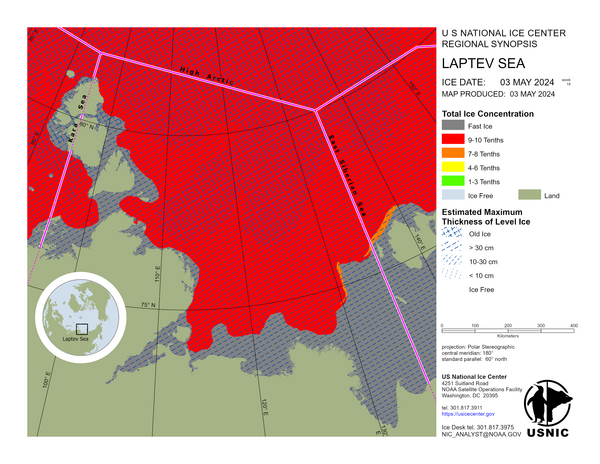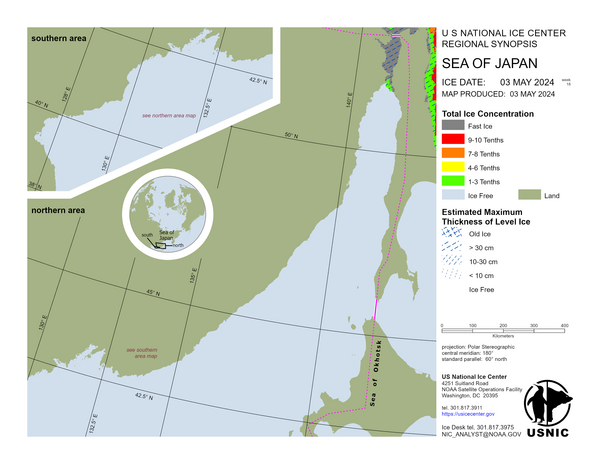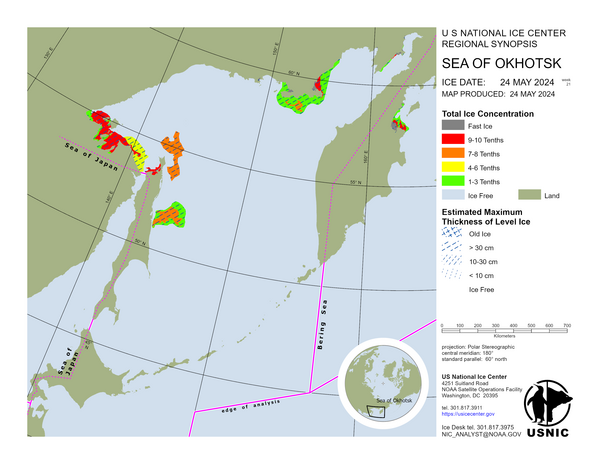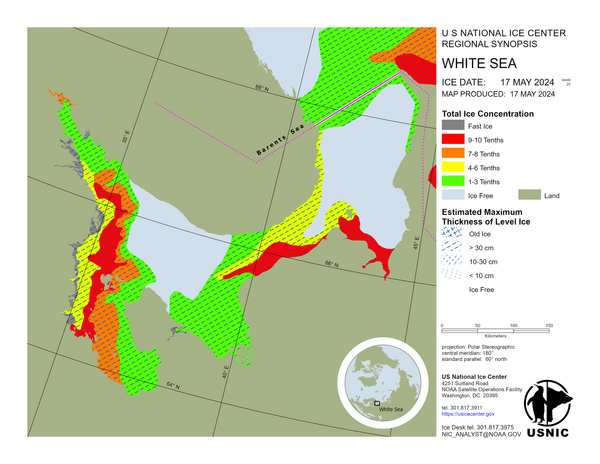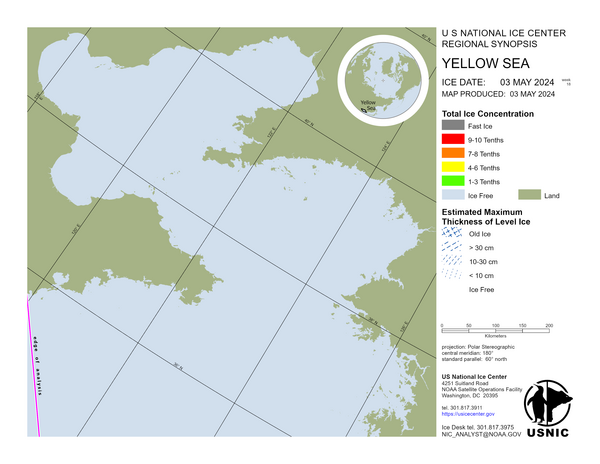Arctic Regional Synopsis
Regional charts and associated synopsis write-up capture ice and environmental conditions throughout the Arctic which are based on the U.S. National Ice Center’s weekly analysis. Charts and synopses are updated weekly on Fridays. Note: Baltic Sea analysis is provided by the Finnish Meteorological Institute. The Canadian Archipelago (Canada East, Canada North, Canada West, and Hudson Bay) analysis is provided by the Canadian Ice Service.
Regional Quick Access
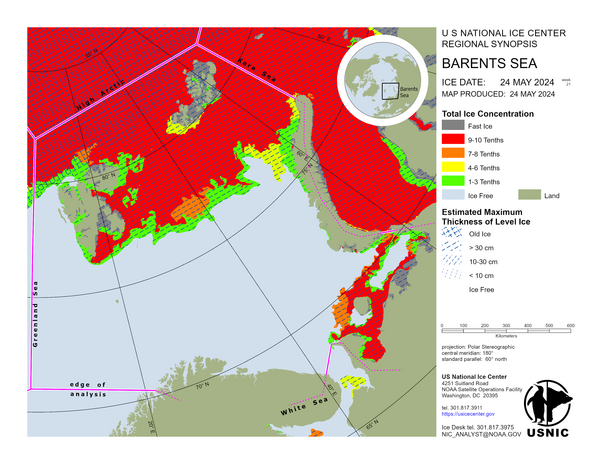
Barents Sea
Air temperatures over the northern Barents Sea range from -06°C to -20°C. The ice edge has drifted southward or grown 20 to 120 nautical miles. Young sea ice is the dominant ice type in the northern Barents Sea. In the southern Barents Sea air temperatures range from -04°C to -16°C. In the protected shallow bays fast ice continues to grow in thickness and extent.
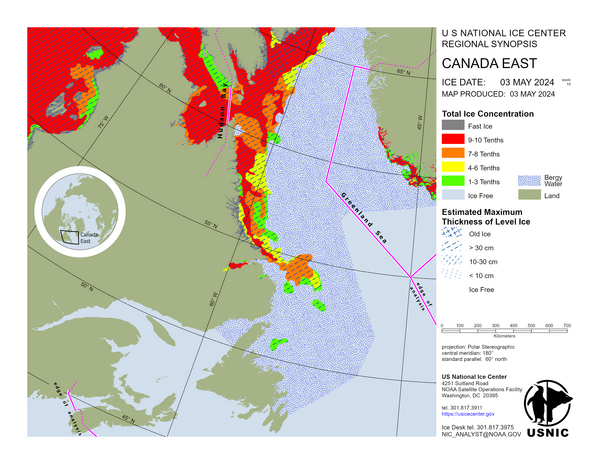
Canada East
Eureka Sound comprises variable proportions of multi-year, second-year and first-year are fast ice. Western Baffin Bay comprises young and first-year ice with a trace of multi-year. Northwestern section. A mixture of multi-year, second-year and young ice continues to form along the western coast of Greenland. Eastern Baffin Bay contains bergy water. New and young ice continue to form along the western coast of Greenland. Northern Foxe Basin comprises young ice and some of thin first year ice is now present in some of the fast ice. Southern Foxe Basin is open water with new and young ice along the coasts. Davis Strait contains bergy water.
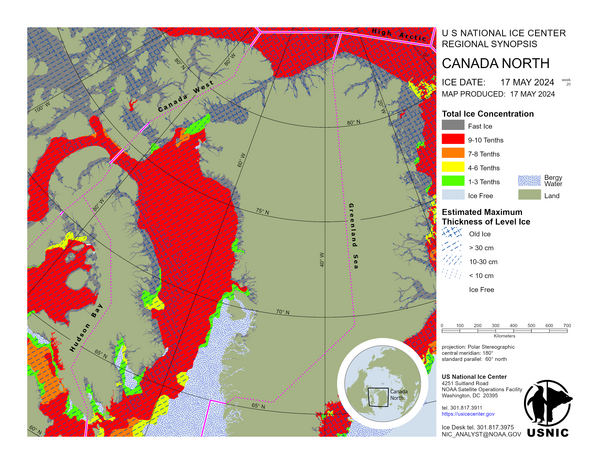
Canada North
The Arctic Ocean contains mainly multi-year ice with some second-year and first-year ice present. Eureka Sound comprises variable proportions of multi-year, second-year and first-year ice.Nares Strait contains a mix of multi-year, second-year and first-year ice. Young ice is still developing in southern Nares Straight.Jones Sound is now mostly fast ice with multi-year and second-year ice. Young ice is present in low concentrations near Baffin Bay. Lancaster Sound contains a mix of young and first year ice with a trace of multi-year ice. Low concentrations of the multi-year and second-year ice is present in the Baffin section. The Gulf of Boothia, Prince-Regent Inlet and Committee Bay consist of young and first-year ice. Cumberland Sound contains mostly bergy water with some new and young ice in the small’s fjord and inlets.
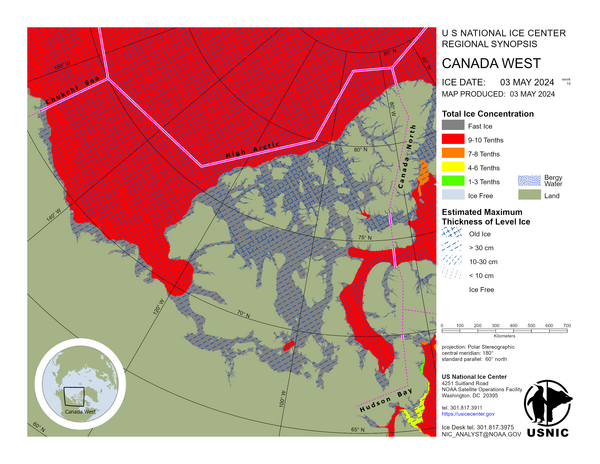
Canada West
The Queen Elizabeth Islands are fast multi-year, second-year, and first-year ice. M’Clure Strait contains predominantly multi-year ice with some second-year and first-year ice. Viscount Melville Sound is fast ice composed of predominantly multi-year ice with some second-year and first-year ice. Barrow Strait is composed of first-year ice and young ice with a trace of multi-year and second-year ice. M’Clintock Channel is predominantly first-year ice with a trace of multi-year ice, second-year ice, and small amounts of young ice. There is a large area of fast ice in southern M’Clintock along the Victoria Island Coast. Peel Sound is fast first-year ice with a trace of multi-year ice and second-year ice. Queen Maud Gulf is fast ice composed of young ice with some first-year ice. Larsen sound is composed of first-year ice and young ice with a trace of multi-year and second-year ice in the northern section. Coronation Gulf is fast ice composed of young ice with some first-year ice. Amundsen Gulf is predominantly thin first-year with some young ice and a trace of multi-year ice in the northern section. Canada Basin is predominantly multi-year ice with some second-year ice and first-year ice. The Beaufort Sea is predominantly first-year ice with some multi-year and second year ice further offshore. There is some young ice present near the shore and along the coasts of Alaska and Banks Island.
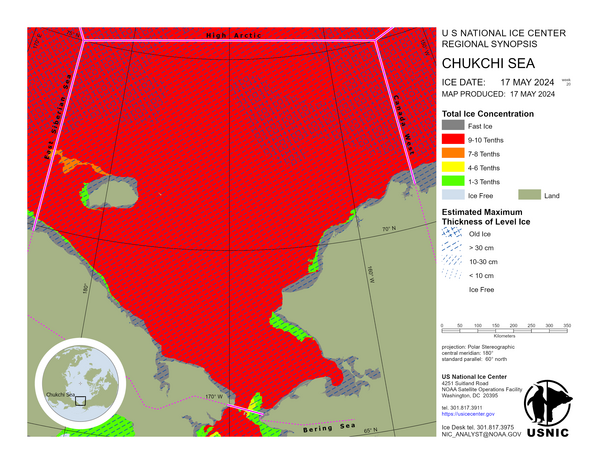
Chukchi Sea
Strong south and eastern movement along the Russian side of the Chukchi Sea allowed for a significant area of new and young ice to form adjacent to the coast. Movement of the pack ice also allowed for areas of new and young ice to form within Kotzebue Sound and off the Alaskan coast between Point Lay and Wainwright.
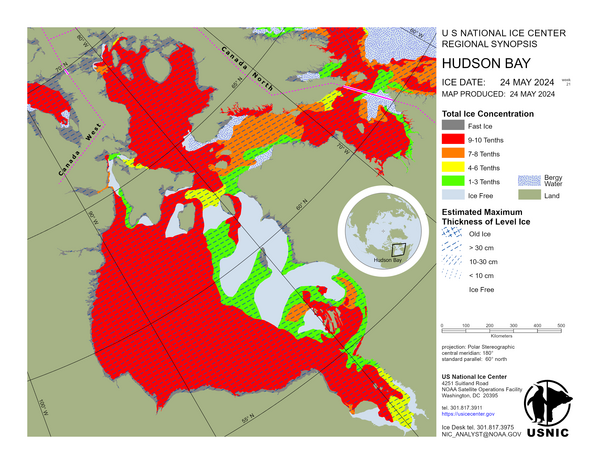
Hudson Bay
Northern Hudson Bay is mostly open water, with increasing amounts of new and young ice continuing to form along the northwestern coastline and the shores of Southampton Island.Small amounts of new ice exist along the eastern coastline and the shores of Coats and Mansel Island. Southern Hudson Bay is mostly open water, with areas of new and young ice developing along the western coast.James Bay consists of new and young ice forming in the western half and around Akimiski island, and equal parts open water and young ice in the eastern half. Hudson Strait contains bergy water with some small areas of new ice development along the southern coast, with transient new ice development in the central strait. Ungava Bay is bergy water with some new ice and young ice development along the west and southern coasts. Frobisher Bay contains bergy water with some new ice and young ice development near Iqaluit. Labrador Sea is bergy water with some new ice developing along the coast. Lake Melville has experienced rapid growth of young and new ice along the coasts, with open water existing in the centre.
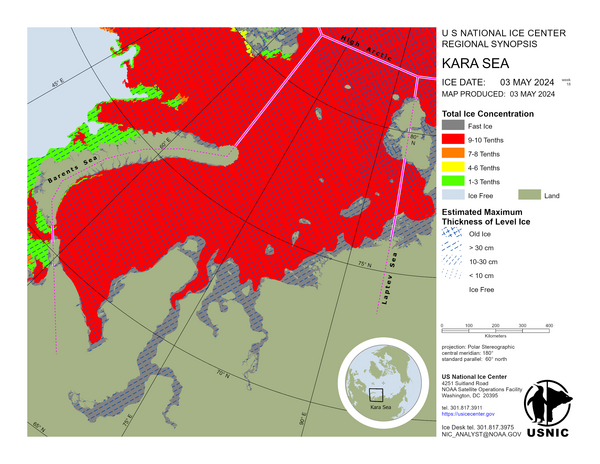
Kara Sea
In the Kara Sea air temperatures range from -06°C to -34°C. Rapid sea ice growth in thickness and extent has occurred due to these cold temperatures, especially over the eastern portion of the sea where the cold air spills out from mainland Russia. The middle of the southern Kara Sea remains sea ice free. Sea ice along Novaya Zemlya drifted eastward and deteriorate in the warmer waters.
